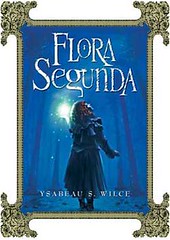I love high fashion.
Actually, perhaps I should clarify. I am very interested in fashion--after all, clothes do make the man/woman/child/butler--but I love couture. Fashion is all about creating market frenzy and marketing frenzy, constantly coming up with new things for people (women) to buy, and then denying people (women) the right to buy those things via price, deliberate shortage, or sizing. It is interesting to see how fashion reflects society, etc., but--
Fashion makes women feel bad; bad they can't wear it, bad they love it, bad they can't afford it, wah wah wah. The lady-mags that shill for fashion are full of pernicious articles that kill women's souls, make them feel inadequate and lacking, destroy their self-confidence and I say this woefully because I like some of the lady-mags, but I have sworn off of them because they are poison. (All except for W, which is full of $500 dollar per oz perfumes, and fashion layouts so abstract you can't even tell what the clothes look like--impossible to take seriously.)
For the most part, the lady-mags do not cover couture, because couture is fashion taken to extremes and of no use to the average ladies. You can't afford it and you couldn't wear it if you could.
What exactly is couture? Couture is...well, I'll let the Master of Couture, John Galliano, via an interview with the FT, explain: "I think couture has to be the dream...it is the undiluted, unrestrained idea."
No one expects to wear couture in its purest form. It's too expensive, too cumbersome, too crazy. And because it's divorced from actual market forces, it is fanciful, insane, dreamy, abstract, visionary. Re Dior's 2004 Collection, I again quote the FT: the "Austro-Hungarian Princess collection, where models loomed on 6in platforms complete with crowns, corsets, and fur-and crystal-trimmed exaggerated hourglass figures; and last January's Japan-inspired Origami collection of New Look meets kimono suits and dresses, folded and pleated in ever more elaborate and mind bending constructions." Those aren't the clothes you wear to go to Starbucks; they are clothes that foster revolution. (In the case of the French revolution, literally--more on that in a later post.)
And for those few ladies who can handle modified couture, well, no one expects them to wear it on their own: even today a Dior dress has more scaffolding in it than the Empire State Building.
Couture is the science fiction/fantasy of fashion. Designers are unfettered from reality; they use clothing to create stories, to explore ideas, to imagine new worlds and new civilizations. Couture reflects on history past, and reshapes it into history future. It is no less an art form than painting or sculpture. I find it endlessly fascinating; and consequently, I spend a lot of time thinking about how people in Califa dress. It don't always come across in the text, as not everyone may be interested in reading very detailed descriptions of the beading on Flora's Catorcena dress, or the pattern of frogging on Buck's dress uniform--but I still think about it. Califa is my own version of Couture, I guess. Perhaps not as visionary, but a good deal less expensive!
Anyway, this post was inspired by an article about John Galliano in last week's How to Spend It section of the FT. You can read the article in full here, via some weird pdf-like interface. It starts on page 9 and contains some fantastic pictures of Dior dresses, as well as John Galliano and his do-rag being very thoughtful and passionate.
Wednesday, December 5, 2007
Subscribe to:
Post Comments (Atom)











No comments:
Post a Comment